The Other Windows
Before Windows became a fact of life for most computer users, a scrappy upstart named GeoWorks tried taking Microsoft on. It failed, but it gave us AOL.
Hey all, Ernie here with a refreshed piece about GeoWorks, one of the great noble failures of the early PC era. There have been some updates that I’ve been wanting to add to this, as well as additional details that I think tech fans would appreciate. So here’s a second look.
“GEOS did not pioneer the GUI; most of its features were already present in the larger OSes of the day, like the classic Mac (albeit, not Windows). What GEOS did show is that cheap, low-power, commodity hardware and simple office productivity software worked. You did not need a $2000 machine to type a simple letter and print it.”
— OS News writer Kroc Camen, discussing the early launch and success of GEOS (Graphical Environment Operating System), which started as an operating system option for the Commodore 64. The app, built by Berkeley Softworks—not to be confused with Berkeley Systems, which built the famous “flying toasters” screensaver—was one of the most popular pieces of software on C64 for a time, thanks to the fact that it was very functional and worked on very inexpensive hardware. The operating system eventually moved to the PC in the early ’90s in a more advanced form, and Berkeley Softworks changed its name to GeoWorks.
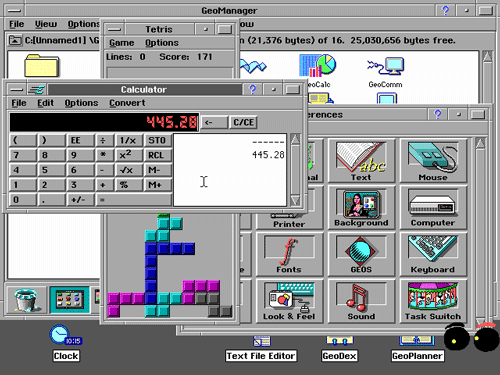
So what was GeoWorks like, anyway?
I had some experience with Commodore 64 thanks to a childhood friend of mine who owned one and let me mess around with it a bit, but ultimately, I caught onto the PC version of GeoWorks because it came bundled with a 386 I used when I was a kid.
That computer wasn’t super-fast—what, with its 40-megabyte hard drive and one megabyte of RAM—and, as a result, it really benefited from the lightweight, object-oriented approach of GeoWorks. The operating system took up maybe 10 of those megabytes, tops. And in an era where connecting to the wider world wasn’t really a big thing, the simplicity of the format was actually kind of nice.
Among the more interesting things about the platform:
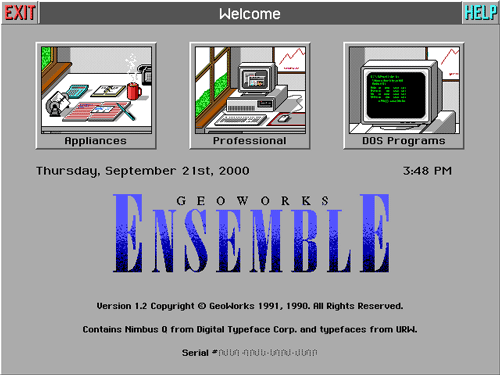
Different interfaces for different skill levels: DOS was not a simple operating system for novices to jump into, and GeoWorks Ensemble made an effort to ensure it was more approachable. It offered two different tiers of usage—“appliances” and “professional,” along with a shell to jump into DOS programs, so you could play Commander Keen without a problem if you really wanted to. For people who had never used a PC before, the strategy was perfect—it had built-in training wheels.
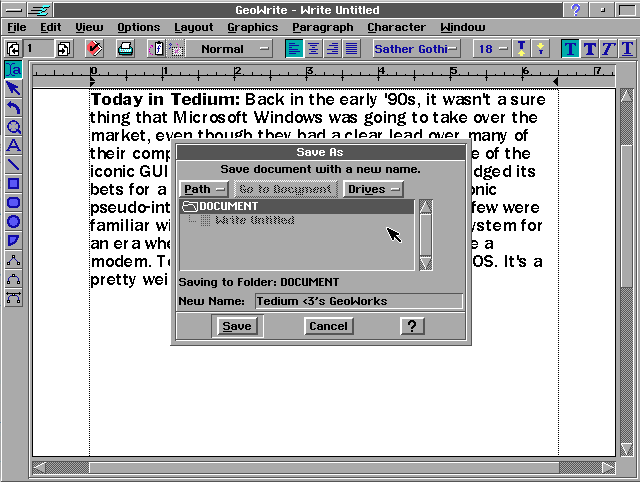
Built-in office tools: The software included a variety of apps that were roughly comparable to anything you could find on other operating systems such as the Mac, including a word processor, calendar, and spreadsheet. It also included a Print Shop-style banner-maker, which came in handy if you owned a dot-matrix printer. Overall, these offerings were great for home users, an audience that Microsoft hadn’t really emphasized early on in Windows’ history. It wasn’t as flashy as, say, Microsoft Bob, but it worked a lot better.
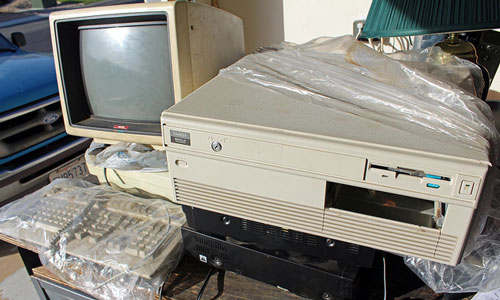
Strong capabilities, low power: But the best part of GeoWorks was the fact that it worked well without really strong hardware. Windows 3.1 really needed a 486 to shine, but GeoWorks could effectively run on a 286 or 386 without any problem. Which was smart, because the market at that time was sizable. “Estimates of the total number of XTs and 286s that can’t do Windows right (Windows 3.0 was designed primarily for 80386-based computers) range as high as 20 million,” a 1991 Compute! magazine article stated. “GEOS may inherit this enormous market—providing that it survives.” It was stable, and despite the fact that (like early versions of Windows) it was essentially a graphical shell for DOS, it rarely ran into hiccups.
The software had a cult fanbase, especially among German computer users, who have done a lot to keep its memory alive.
So why did it fail? There are a variety of reasons out there, including the belief among its own leadership that Microsoft had iced GeoWorks out of the OEM market, but one of the bigger ones is that it had no apps. America Online was one of the only third-party developers it had—certainly a biggie, but not enough to sell a platform. Part of the reason for this was that, early on, you needed a Sun workstation to develop software for the platform, a deeply ironic requirement—essentially, you needed a $7,000 computer to develop software for low-end PCs, which meant mom-and-pop shops had no chance to even get on board. At the time, Microsoft was releasing Windows-native development platforms like Visual Basic to win over small developers.
But those things could have been dealt with, honestly, if the desktop operating system itself gained a significant audience. Even GeoWorks’ biggest fans knew it didn’t stand a chance against Windows, due to Microsoft’s already-established goodwill.
“I feel badly that this truly amazing program will never be given a chance, as IBM and Microsoft would never allow it,” one such fan wrote to PC Magazine in 1991. “I hope that software developers will see Ensemble’s amazing potential and will begin developing it. Without third-party developers, Ensemble will never survive.”
Microsoft was standing on the shoulders of giants. GeoWorks could barely even reach the ankles.
“The Promenade interface makes it easy for all family members to use the services, without dealing with the frustrations of complicated commands and functions. Yet the software is advanced enough to satisfy experienced users of online services.”
—Steve Case, the executive vice president of Quantum Computer Services, discussing the launch of the company’s then-new dial-up service Promenade in a 1990 press release. The software, which ran on a pre-release version of GeoWorks, was specifically set aside for IBM’s PS/1 platform, which was one of the earliest computers to have a built-in modem by default. (Finding a version of Promenade in the wild is very difficult even for retro software sleuths, as this lengthy message board thread highlights, but here’s what it looks like.) Within a year, the platform had been retooled into America Online (a company Case famously led throughout the ’90s), and within a decade, the company would be in the middle of an audacious merger with Time Warner.
/uploads/0618_motif.jpg)
The interface standard that gave GeoWorks its distinctive look
GeoWorks Ensemble was a GUI built for low-end home users, but it had borrowed some of its DNA from the era’s high-end computing infrastructure—particularly in the form of its interface.
The software, even with its relatively modest user base, may have been one of the most consumer-facing uses of Motif, a graphical user interface component toolkit that had first surfaced around the time that GeoWorks Ensemble was first built. While Windows was using its own internally built graphical user interface, GeoWorks was using an agreed-upon standard that was put together by the Open Software Foundation, a group of companies that aimed to create open standards for Unix.
(Do not, however, mistake “open standards” for “open source”: During the period GeoWorks used it, the Motif toolkit was proprietary, and its corporate users were required to pay royalties for it.)
Motif ages itself pretty handily due to its chiseled interface elements, a style that was also used in competing interfaces of the era, such as Windows 3.1 and NeXT. It’s effectively 1991 in software form.
/uploads/0618_cde.jpg)
But for a time, it was perhaps one of the most widely used GUI interface in Unix implementations, even if it only rarely surfaced in the consumer world. Irix, the operating system used in SGI computers, was based on Motif (using a descendant windowing interface called 4Dwm, or the IRIS Extended Motif Window Manager), as was the Common Desktop Environment that many Unix computers used throughout the 1990s.
But because it was proprietary, Motif and Linux didn’t always speak the same language and its impact was less felt in the world of open source, which was growing by leaps and bounds at the time. In 2000, the tool was made available to the open-source community, but not actually open sourced and reliant on a nonstandard license. Only in 2012, nearly a quarter-century after its initial creation, was Motif open-sourced.
But by 2012, Motif—while still having a fanbase and use in industrial applications, for example—had largely been superseded by interfaces borne from open source that quickly outpaced it. GNOME and KDE Plasma—take your pick!—have evolved consistently over the past couple of decades to become much better options. (For one thing, they’re significantly more modern.) But Motif, and its use in the Common Desktop Environment, arguably paved the way for those alternative interfaces to shine and go mainstream.
GeoWorks’ use of it was fairly unique, in part because GEOS wasn’t really a Unix operating system, but its own thing that ran on top of DOS. Its use of Motif also predated some of the other uses.
But by the late ’90s and early 2000s, that fetching not-Windows look gave way to designs that were very much Windows knockoffs. Too bad.
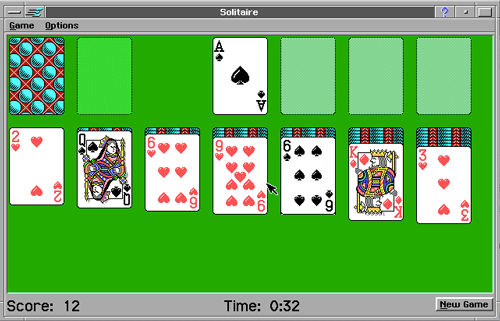
GeoWorks may have died as an operating system, but it had a number of extra lives
One interesting thing about failed operating systems is that they often don’t really die, but show up in random places because the software is still useful in certain cases. Palm’s sadly discarded webOS, for example, currently drives LG’s smart televisions, and as we noted last week, the NYC subway has used OS/2 to manage its systems for nearly three decades.
GEOS was much the same way. Like a cow shoved through the food manufacturing process and split into a million pieces, parts of GEOS showed up in the ingredient lists of all sorts of weird products. Among the places where GEOS showed its bones:
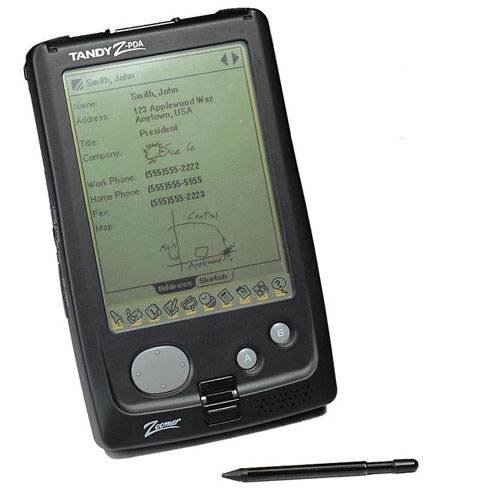
Personal digital assistants: Before Palm Computing founder Jeff Hawkins came up with the PalmPilot, he formulated an early take on the platform using a stripped-down version of GEOS. The Tandy Zoomer, which came out in 1993, wasn’t a hit, but the collaboration with GeoWorks, Tandy, and Casio proved informative for Hawkins and his team. It helped set the stage for the first truly successful PDA a few years later—one that didn’t use GEOS. (Not to be outdone, Hewlett-Packard created a PDA using the platform itself.)
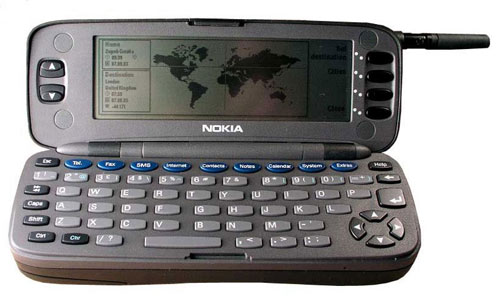
Early smartphones: GEOS’ role in the mobile revolution wasn’t limited to Palm. In the late ’90s, the operating system was a key part of the Nokia 9000 Communicator, one of the earliest smartphones, and one that was well-loved. It was capable of basic word-processing, graphical web-browsing, and could even edit a spreadsheet. For those perks, it wasn’t cheap, costing $800 at launch, and it was Zack Morris huge. “Modern users take features like mobile email and web browsing for granted, but the Nokia 9000 Communicator was the first device to offer these in a single device,” tech writer Richard Baguley wrote on Medium in 2013. “It may have been a bulky, clunky device, but we still miss it.”
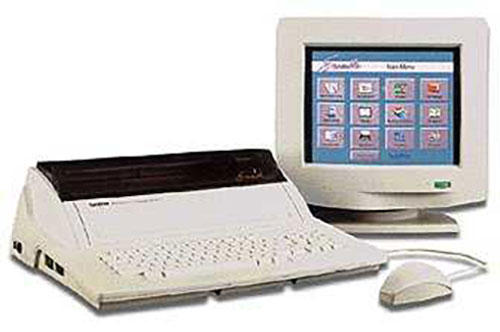
Electronic typewriters: The ’90s were a bad time to be a typewriter-maker, and Brother was not well-positioned to handle the internet revolution. But it did have something up its sleeve: GEOS. The company collaborated with GeoWorks on a set of printer variations that added basic word processing and desktop publishing capabilities to the mix. They were still typewriters, but they did slightly more interesting things than write type.
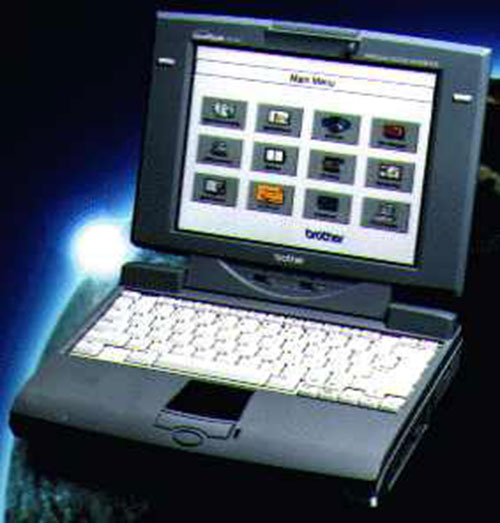
Primitive netbooks: Brother’s interest in GEOS didn’t just extend to typewriters; it saw GEOS as an opportunity to bring “computing to the masses,” as one press release put it. In 1998, years after GEOS had faded from view for just about everyone else, the typewriter company launched an alternative platform—the $500 GeoBook, a low-power laptop that predicted the rise of netbooks by about a decade. It could surf the web and had much of the software available in the DOS version of GeoWorks, but it didn’t have a hard drive, which helped keep the price down. And much like netbooks, reviewers hated them. “For the price of this unit, you can easily find a discontinued, refurbished or used Windows computer and maybe even a new one. It will do hundreds of things that this machine cannot dream of,” a negative 1998 New York Times review explained.
(In case you’re curious what one of these is like, here’s a 2017 review.)
There aren’t any crazy GEOS projects like this nowadays that I’m aware of, but hey, maybe it’s running an ATM somewhere.
When I wrote the original piece, it ended kind of sadly, as it had been written at a time when GeoWorks, as a concept, was at its proverbial fork in the road after passing through a whole series of hands.
The good news is, GEOS has found its direction once again. But it’s worth discussing how it got there first.
After GeoWorks the company dissolved in the late ’90s, the technology was sold off to a firm named NewDeal, which built an office suite out of GEOS, one that looked a lot like Windows 95 and took away a lot of the platform’s charm.
At one point, the operating system was owned by Ted Turner’s son, who attempted to run a low-cost PC company called MyTurn.com, with the GeoWorks software as its centerpiece. (When Teddy Turner ran for Congress in 2013, his MyTurn.com days came back to haunt him.)
But perhaps its longest legacy was in the hands of a firm named Breadbox, which had essentially treated GeoWorks as a volunteer upkeep project, with the eventual goal of turning the GEOS into an educational software platform that worked in tandem with Android.
But (as I noted at the end of my original story from 2016) the platform faced a devastating setback when one of its maintainers, Frank S. Fischer, died unexpectedly. Fellow maintainer John F. Howard pledged it would return, though he said there were “some legal issues to resolve.”
The nature of those legal issues became clear earlier this year, after the work on the PC version of GEOS re-emerged as an open source GitHub project. (Which is great news! GEOS was many things over the years, but never open source.)
Managed by a firm named blueway.Softworks, the application took a complicated route to open source, TechRepublic reporter James Sanders noted in March, including agreements with the former rights-holders.
Speaking to the publication, blueway.Softworks founder Falk Rehwagen, who once worked with Breadbox, noted that the complex mixture of licensed and non-licensed software baked into PC/GEOS makes its open-sourcing harder than it sounds.
“Because Breadbox Ensemble uses licensed non-free parts, we decided to make it available for registered users only along the license agreement, to keep the system available to the world,” Rehwagen explained. “At the same time we are separating the non-free parts and making PC/GEOS core available as open-source, forming #FreeGEOS.”
The goal, he adds, is to give it state-of-the-art features and improve its level of support. “Modernizing the platform is a priority,” he added.
PC/GEOS may not take over the world—like Windows 3.1, it was a glorified DOS shell, and when was the last time you used DOS? But there’s something important and essential about keeping these operating systems ticking.
In some ways, GeoWorks was my first introduction into home computing, the GUI I used before Windows, before MacOS, before Linux or Android. It deserves a space in the modern conversation—even if it’s just to show that it can be done, even after all these years.
--
Find this one an interesting read? Share it with a pal! (And give GeoWorks a try sometime—it’s pretty cool!)
Live and breathe all the technical details in this? Wanna find a new job that puts them to the test? Try out this quiz from Triplebyte to see where your tech expertise lies. It might be the first step in finding your dream gig in the tech industry.
:format(jpeg)/2018/01/exkz5jdbejhaorz9nfaz--1-.gif)
/2018/01/exkz5jdbejhaorz9nfaz--1-.gif)

/uploads/ernie_crop.jpg)